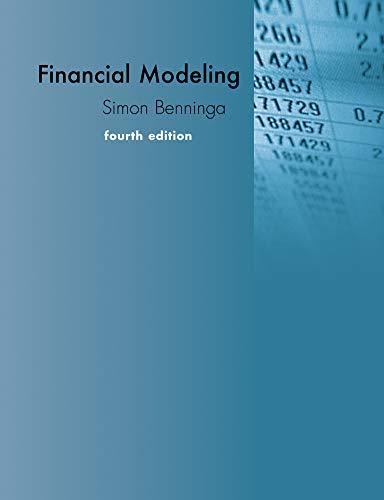Question
Question 2.2(30 Marks) Cereals Pty(Ltd) is has to replace a machine that is used to make a pulp out of grain fibres which is the
Question 2.2(30 Marks)
Cereals Pty(Ltd) is has to replace a machine that is used to make a pulp out of grain fibres which is the used in their main product, cereals. The current machine is not acceptable in terms of industry good practice anymore and needs to be replaced. The management of the firm has identified two possible new machines that can be used, but are unsure of the financial implications of acquiring any one of the two machines. You have been tasked with determining the financial acceptability of the two respective machines. This will assist the management of the firm as they will then have objective information regarding which of the machines to investigate further.
Some general information was e-mailed to you by the bookkeeper:
- The current machine has been written off but there is already a committed buyer who has agreed to pay R50 000 for it which he wants to sell as scrap metal.
- The company is taxed at 28%.
- The machines are always depreciated on a straight- line basis over the usable life of the project.
- Quotes from an installer have already been obtained. It will cost R2000 000 to install either machine.
- The company has always had such machines on their books and they always need to be replaced at the end of their life therefore they are continually renewable projects.
The financial manager of the firm e-mailed you the following:
All of our projects are evaluated to take inflation and risk into account. For inflation, we adjust by using the real return of return and we also adjust for risk by using a risk adjusted discount rate (RADR) based on the coefficient of variation (CV) of the estimated sales cash flows.
A risk adjustment is always made as follows:
If the CV is smaller than 0,5, the risk premium is multiplied by 0,8
If the CV is larger than 0,5 but smaller than 0,75, the risk premium is kept as is.
If the CV is more than 0,75, the risk premium is multiplied by 1,5.
The WACC of the company is 11%, the risk free rate is 8% and inflation is 6%.
Where the risk premium refers to WACC minus the risk free rate, which is the premium to be adjusted. Risk and inflation adjustments are done in the following order: The risk free rate is adjusted for inflation by way of the real rate of return method. This inflation adjusted risk free rate then gets a risk premium added as per the above information.
When evaluating multiple projects, we compare net present value (NPV), internal rate of return (IRR), and equivalent equal annuities (EAA) as well as payback period. All of this information is passed on to decision makers so that they can start evaluating all projects that will at the very least offer acceptable returns.
Cash flows (not adjusted for inflation) of the respective machines have been estimated as follows:
Cash flows Machine 1 (R000's) Machine 2 (R'000's)
Purchase price 3000 4000
Sales generated per year2346 4240
Variable costs associated50% of sales 40% of sales
Fixed costs associated with the machine 200 500
Increase in net operating working capital 5001000
Economic lifespan 5 years 4 years
Residual value at end of economic life 1 500 1400
The sales generated per year were determined as follows:
Hint: The values above should be used in the determination of relevant cash flows, the values below are for the CV calculation.
All values in R'000's.
Machine 1Machine 2
Cash flowProbability Cash flowProbability
1020 0.2 450 0.2
25600.7 3800 0.5
3500 0.17500 0.3
Required: Determine the:
1. Relevant cash flows(6) 2. Discount rates to be used(8) 3. NPV's(2) 4. IRR's(2) 5. EEA's;(6)
and making use of the given information, evaluate the acceptability of the two projects. (6)
Step by Step Solution
There are 3 Steps involved in it
Step: 1

Get Instant Access to Expert-Tailored Solutions
See step-by-step solutions with expert insights and AI powered tools for academic success
Step: 2

Step: 3

Ace Your Homework with AI
Get the answers you need in no time with our AI-driven, step-by-step assistance
Get Started


